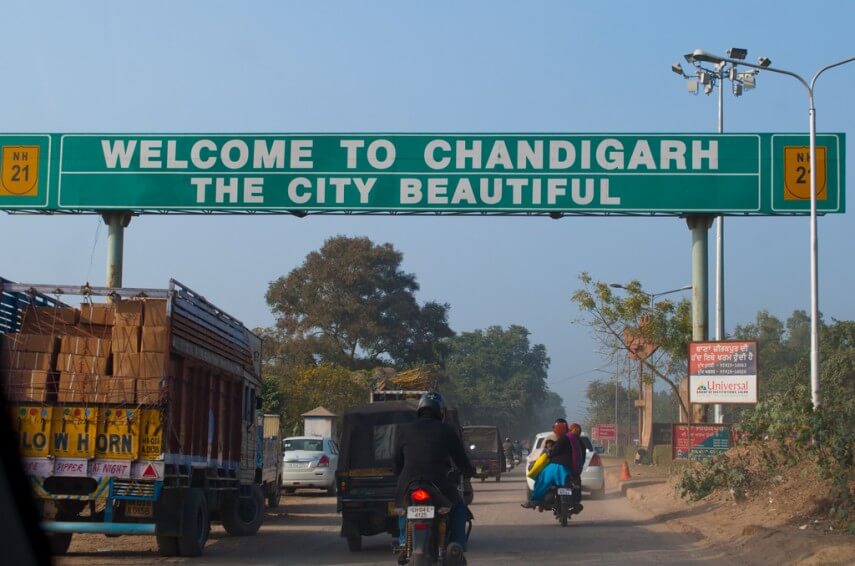Why A Home In Chandigarh Isn't A Distant Dream For The Common Man

When he was done planning and designing the new Punjab capital, Chandigarh, in 1952, Swiss-French architect Le Corbusier declared: “The seed of Chandigarh is well sown; it is for the citizens to see that the tree flourishes”. Later, when Punjab was divided into three parts – Punjab, Haryana and Himachal Pradesh – Chandigarh became the capital of Haryana, too.
To ensure the unique character of this planned city remained unspoilt, Corbusier had put in place an edict that directed, among many other things, that no personal statues should be constructed in Chandigarh. And to save the city, now a Union Territory (UT), from rising pollution in the times to come, the master architect had laid down the policy that only electricity-powered industries should be permitted in its commercial areas.
That the city today is counted among the cleanest and greenest in India, despite the extreme weather condition it faces, proves beyond doubt that Corbusier's masterplan worked out well for Chandigarh.
These unique attributes also meant that having a house in the city was a privilege for the common man; a property for sale in Chandigarh was mostly out of bounds for him. However, that isn't true anymore, especially with a shift in focus and coming up of several other urban centres. If the real estate price trends are anything to go by, this may well be just the right time to put your money in properties in Chandigarh or its periphery.
PropGuide gives you a lowdown on the real estate in Chandigarh.
An expanding city: For reasons obvious, land in Chandigarh was very expensive earlier. When compared with other state capitals in India, land prices in this UT were much higher. And, until recently, finding affordable properties here was difficult, thanks mainly to limited supply because of restrictions on construction activities within the periphery. But the city's population was growing and it needed more space. By official estimates Chandigarh's population by 2021 could be around 19.5 lakh, almost four times the number for which the city was originally built. So, the UT administration encouraged construction activities in the city's periphery. Now, with areas like Dhakoli, Dera Bassi, Kharar, Mani Majra, Mohali, Panchkula and Zirakpur witnessing project-based constructions, supply of residential units is gradually increasing in Greater Chandigarh.
Shift to affordable units: The city's residential space has primarily been known for plush villas and expansive mansions. This is why real estate, together with banking and finance, had a 32.33 per cent share in Chandigarh's gross state domestic product (GSDP) in 2009-10. Since 1990-2000, the share has remained more or less the same, show government data. However, with upcoming apartment-based projects in the city's suburbs, these numbers could go up. And it would be possible for people with limited budgets to have their own piece of the paradise near Chandigarh. According to PropTiger DataLabs, while average property prices in Zirakpur range between Rs 3,300 and Rs 3,500 per sq ft, they are Rs 2,300 to Rs 2,500 per sq ft in Kharar, and Rs 3,700 to Rs 4,100 per sq ft in Mullanpur.
Opening up: Chandigarh has been a favourite with retired Punjab and Haryana government employees of higher ranks, especially because of the exclusivity and peace it offers. Chandigarh's per-capital income is one of the highest in India. However, with the rising income levels of the other sections in the twin states, besides the neighbouring Himachal Pradesh and Delhi, Chandigarh is becoming home to outsiders as well. In fact, Pune and Chandigarh are two cities that see the highest investment from non-resident Indians.
An education hub: The city of Corbusier also houses some of the best educational institutions in the country. These include the Panjab University, which boasts the likes of former prime minister Manmohan Singh as its esteemed alumni. The city is also planning to construct a state-of-the-art Education City, while the Punjab Engineering Collage is set to get an Indian Institute of Technology status. Authorities also have plans to set up branches of the prestigious Indian Institute of Management and National Institute of Design here. This is why Chandigarh has a flourishing rental housing market, which is set to grow further. Units constructed for this purpose could prove a wise investment decision.
Industrial centre: Information technology (IT) and pharmaceutical companies setting up their campuses around the city's periphery has also brought to Chandigarh a workforce that needs housing. IT majors like Infosys, Wipro and Bharti Airtel are among corporate giants with campuses in the city's Rajiv Gandhi Chandigarh Technology Park. In fact, “comprehensive plans are in various stages of implementation in the field of housing, especially to cater to the needs of the incoming IT professionals”, says the city government's website. Further, the UT administration has promulgated reformed building bye-laws to address the rising demand for housing, keeping a standard floor area ratio across the city. The government's push to housing is sure to make the property market in Chandigarh more vibrant in the times to come.
